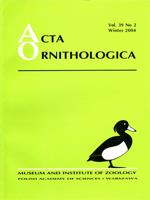The “costs of predation” hypothesis predicts that larger nests are more likely to be predated than smaller ones. However, nest size has not been found to be related to predation probability within any species. This study evaluated the “costs of predation” hypothesis in the Olivaceous Warbler during 2001–2003 in northwestern Bulgaria. Successful nests were significantly smaller and denser than those that were predated. Nest size decreased significantly during the course of the breeding season and increased with nest height. The relationship between nest size and the likelihood of predation was still significant even when the effects of laying date and nest height were controlled. Nest size was negatively related to fledging success even when only successful nests were considered. This finding is contrary to the prediction of the “sexual display” hypothesis, which states that nest size is positively related to fledging success, and suggests that nest size may signal phenotypic quality through the ability in this species to build a small but compact nest. It seems that both natural selection and sexual selection have led to the evolution of small nests in the Olivaceous Warbler. This is the most likely reason why the difference in nest-size between predated and non-predated nests was apparent, even in unmanipulated settings.
How to translate text using browser tools
1 December 2004
Smaller Eastern Olivaceous Warbler Hippolais pallida elaeica Nests Suffer Less Predation than Larger Ones
Anton Antonov

Acta Ornithologica
Vol. 39 • No. 2
December 2004
Vol. 39 • No. 2
December 2004
breeding
fledgling success
Hippolais pallida
nest predation
nest size
Olivaceous Warbler




